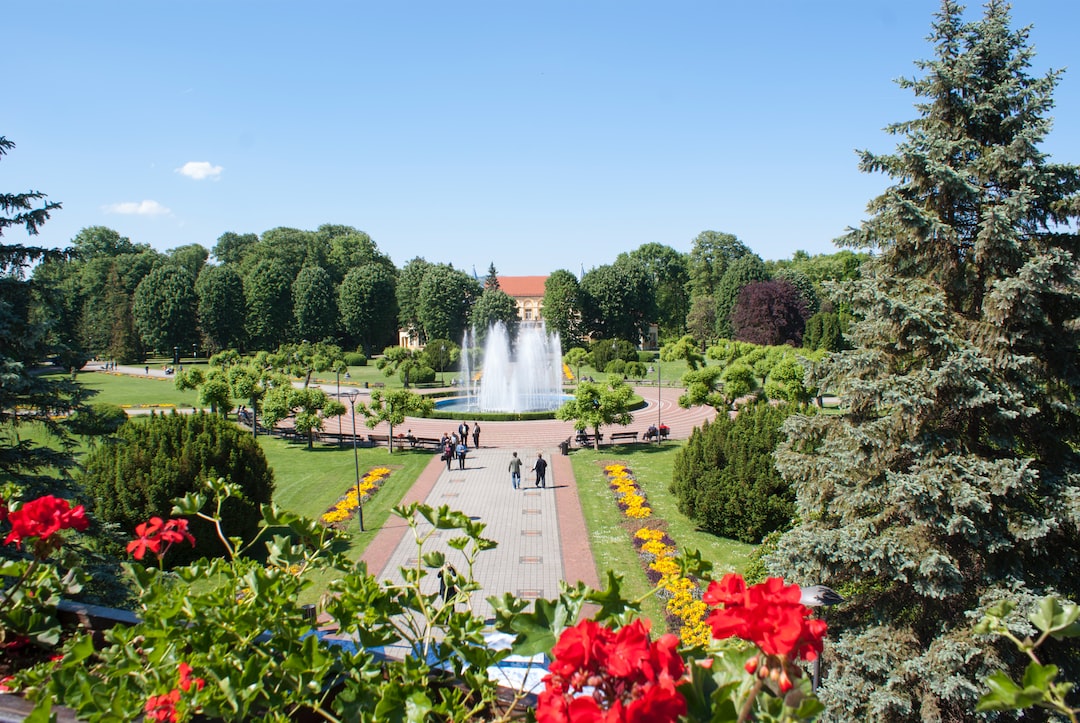Have you ever considered incorporating Serbian wedding traditions into your special day?
Whether it’s the ceremony, reception, attire, or other customs and superstitions – there are so many wonderful ways to honor the culture of Serbia on your big day.
From ancient rituals that bring good luck for generations ahead to celebratory receptions with traditional music – Serbian wedding traditions have something for everyone.
Read on to discover all about how these fascinating cultural practices can make an already beautiful event even more magical.
Serbian Wedding Traditions
Ceremony Traditions
1. Pre-Wedding Rituals
In Serbian culture, the traditional way of asking for a woman’s hand in marriage is through her parents.
The man would go to the woman’s parents and ask their permission to marry her. The man may be accompanied by his parents or other family members as a sign of respect, although this is not always necessary.
If the parents give their consent, they might then bless the couple by giving them gifts such as a scarf or jewelry.
Additionally, if it’s appropriate for the couple’s cultural background, the man may kneel before the father and ask for his daughter’s hand in marriage.
Serbian pre-wedding rituals involve the bride and groom’s families gathering to bless the couple.
This is done by having both families gather in a circle, with each family member offering their blessings for the union of two people.
The ritual ends with the parents of both sides joining hands and giving their blessing to the couple.
2. Wedding Ceremony
During a traditional Serbian wedding ceremony, there is a procession of the bride and groom as they enter into marriage.
The bride typically wears white while carrying flowers or other symbols of fertility, such as wheat or rice.
After exchanging rings, documents are signed to make it official before being blessed by an elder from either side’s family.
Post-wedding rituals involve showering newlyweds with rice or wheat for fertility and good luck.
Traditionally this was done outside, but now it can be done inside if the weather does not permit outdoor activities.
Rice symbolizes abundance, while wheat symbolizes prosperity; together, they represent all that one could wish for in life.
Afterward, guests may offer gifts to help support the couple on their journey together as husband and wife.
The ceremony traditions of a Serbian wedding are steeped in centuries-old rituals and customs, each one more beautiful than the last.
From pre-wedding preparations to post-ceremony celebrations, these time-honored practices have been passed down through generations and remain an integral part of modern-day weddings.
Now let’s take a look at some of the reception traditions that make Serbian weddings special.
Reception Traditions
3. Food and Drink
Traditional Serbian wedding receptions are lively and festive affairs that often last late into the night.
Food and drinks are an important part of any reception.
In Serbia, guests can expect to find a variety of traditional dishes such as roasted lamb, sarma (stuffed cabbage rolls), baklava, rakija (fruit brandy), and slatko (fruit preserves).
When it comes to food and drinks at a Serbian wedding reception, there is no shortage of options.
Roasted lamb is one of the most popular dishes served during these celebrations; it’s typically cooked over an open fire with herbs like rosemary or oregano added for flavor.
Sarma is another classic dish – this involves stuffing grape leaves with ground beef or pork mixed with rice before being boiled in broth until tender.
Baklava is also served as dessert – layers of filo pastry filled with chopped nuts sweetened with honey syrup make up this delicious treat.
Rakija is perhaps one of Serbia’s best-known beverages; made from fermented fruit such as plums or grapes, this strong alcoholic drink has been enjoyed since ancient times.
Slatko rounds off meals perfectly – this sweet preserve made from fruits like apricots or cherries adds sweetness to any meal.
4. Music
Music is usually provided by a live band playing traditional folk music.
Guests will often dance kolo (a traditional circle dance) to the music.
As a token of appreciation for attending the wedding, gifts or favors may be given out at the end of the evening.
Music plays an important role in Serbian weddings, too. Live bands provide entertainment throughout the evening while guests enjoy dancing kolo around them in large circles.
This traditional dance dates back centuries and involves couples linking arms while stepping side-to-side around each other in time to the music – quite a sight when performed by dozens all at once.
5. Gifts
Traditional Serbian wedding gifts often have symbolic meaning.
Common gift items include a platter of bread and salt to represent sustenance throughout the couple’s marriage, a handkerchief that symbolizes loyalty, a Bible as a sign of divine guidance, and various jewelry such as earrings or necklaces.
Money is another popular gift for Serbian weddings. Additionally, couples may receive household items such as kitchen tools or dinnerware to help them with their new life together.
Gifts may also include small items such as candles or trinkets representing good luck charms for newlyweds starting their lives together.
Serbian weddings offer plenty of unique traditions that make them special occasions full of fun activities for everyone involved.
From roasted lamb dinners accompanied by rakija shots to energetic dances around live bands playing folk tunes, there is something here for everyone who attends these celebrations.
Gifts and favors are also common at these events, which may include small items such as candles or trinkets that represent good luck charms for newlyweds starting their lives together.
Attire Traditions
6. Wedding Attire
The bride’s outfit is the most important part of a traditional Serbian wedding. The bride typically wears an ornate white dress with intricate details and a veil to cover her face until she reaches the altar.
This is often accompanied by jewelry, such as earrings or necklaces, that have been passed down from generation to generation in her family.
The groom also has his special attire for the big day. He usually wears a suit or tuxedo with a boutonniere pinned on his lapel.
This can be matched with cufflinks, tie clips, and other accessories to complete the look.
Guests at Serbian weddings are expected to dress formally in shades of red or blue as these colors signify joy and happiness for the couple’s union. Men usually wear suits, while women may opt for dresses or skirts paired with blouses and jackets.
Traditional headpieces like hats or fascinators may also be worn by female guests if desired.
Shoes should always be closed-toe so that they don’t distract from the ceremony itself but still remain stylish enough for this special occasion.
Attire is an important part of Serbian wedding traditions, with the bride and groom wearing traditional clothing to signify their commitment to each other.
Moving on from this, it’s time to explore some other customs and superstitions associated with a Serbian wedding.
Other Customs and Superstitions
7. Rings
Engagement Rings and Bands. Engagement rings are a traditional symbol of commitment in Serbian culture, and they are worn on the right hand until after marriage, when they are moved to the left hand.
This is symbolic of two people becoming one entity through marriage.
The ring itself is usually made from gold or silver, with some couples opting for a combination of both metals.
Some also choose to have their engagement rings custom-made with special engravings or stones representing something meaningful to them as a couple.
8. Blessings
Blessing of the Marriage Bed. Before the consummation of marriage, family members will perform a blessing over the couple’s bed to ensure fertility for any future children they may have together.
This ritual involves placing blessed objects such as wheat grains or coins under the mattress while saying prayers and blessings before finally sprinkling holy water around it three times in an anticlockwise direction (the opposite direction being considered bad luck).
9. Superstitions
In Serbia and other regions of the former Yugoslavia, there are many superstitions and beliefs surrounding weddings.
For example, it is considered bad luck for a bride to be wearing pearls on her wedding day as they symbolize tears.
It is also believed that if rain falls on a newlywed couple during their outdoor ceremony, they will have good luck.
Another superstition says that if the bride steps on a metal object during the ceremony, she will have long-lasting happiness in her marriage.
Furthermore, Serbian brides typically tie a ribbon or bell around their waist as a sign of protection from evil spirits and bad luck.
10. Post-Wedding
Serbian couples traditionally take a honeymoon after a wedding.
This is usually done to give the couple time to adjust to married life without the pressures of hosting a large event.
The honeymoon is seen as both romantic and practical, as it gives them a chance to escape together and relax while they get used to their new status as husband and wife.
Honeymoons can last anywhere from a few days to several weeks, depending on the couple’s preferences.
Conclusion
In conclusion, Serbian wedding traditions are unique and steeped in history. From the ceremony to the reception, there is a variety of customs that make up this beautiful culture.
Attire plays an important role in these weddings as well as other superstitions and customs that are often passed down from generation to generation.
Whether you’re attending or hosting a Serbian wedding, it will be an unforgettable experience full of joyous celebration and rich cultural heritage.




